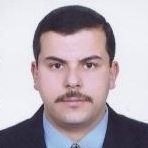International Journal of Computer Network and Information Security (IJCNIS)
IJCNIS Vol. 7, No. 7, 8 Jun. 2015
Cover page and Table of Contents: PDF (size: 622KB)
New Region Growing based on Thresholding Technique Applied to MRI Data
Full Text (PDF, 622KB), PP.61-67
Views: 0 Downloads: 0
Author(s)
Index Terms
Image segmentation, Hybrid techniques, Region growing, Magnetic Resonance Imaging
Abstract
This paper proposes an optimal region growing threshold for the segmentation of magnetic resonance images (MRIs). The proposed algorithm combines local search procedure with thresholding region growing to achieve better generic seeds and optimal thresholds for region growing method. A procedure is used to detect the best possible seeds from a set of data distributed all over the image as a high accumulator of the histogram. The output seeds are fed to the local search algorithm to extract the best seeds around initial seeds. Optimal thresholds are used to overcome the limitations of region growing algorithm and to select the pixels sequentially in a random walk starting at the seed point. The proposed algorithm works automatically without any predefined parameters. The proposed algorithm is applied to the challenging application “gray matter/white matter” segmentation datasets. The experimental results compared with other segmentation techniques show that the proposed algorithm produces more accurate and stable results.
Cite This Paper
A. Afifi, S. Ghoniemy, E.A. Zanaty, S. F. El-Zoghdy, "New Region Growing based on Thresholding Technique Applied to MRI Data", International Journal of Computer Network and Information Security(IJCNIS), vol.7, no.7, pp. 61-67, 2015. DOI:10.5815/ijcnis.2015.07.08
Reference
[1]A.Chung and H.Yan, "Current methods in the automatic tissue segmentation of 3D magnetic resonance brain images", Medical Imaging Reviews, 2006.
[2]Z.Chen, "Histogram partition and interval thresholding for volumetric breast tissue segmentation", Computerized Medical Imaging and Graphics, vol. 32, pp. 1–10, 2008.
[3]O. Gloger, J. Kühn, A. Stanski, H. V?lzke, and R. Puls, “A fully automatic three-step liver segmentation method on LDA-based probability maps for multiple contrast MR images”, Magnetic Resonance Imaging, 28, 2010, 882–897.
[4]N.Otsu, "A threshold selection method from grey-level histograms", IEEE Trans. Systems, Man, and Cybernetics, vol. 9, no. 1, pp 62–66, 1979.
[5]Y. Boykov, M. P. Jolly, “Interactive graph cuts for optimal boundary and region segmentation of objects in n-d images”, In Proc. ICCV, 1, 105–112, 2001.
[6]Y. Boykov, V. Kolmogorov, “An experimental comparison of min-cut/max- flow algorithms for energy minimization in vision”, IEEE Transactions on Pattern Analysis and Machine Intelligence, 26(9), 1124–1137, 2004.
[7]Y. T. Wu, F. Y. Shih, J. Shi, Wu Yi.T., A top-down region dividing approach for image segmentation”, Pattern Recognition, 41, 1948 – 1960, 2008.
[8]Z. Q. Yu, Y. Zhu, J. Yang, Y. M. Zhu, “A hybrid region-boundary model for cerebral cortical segmentation in MRI”, Computerized Medical Imaging and Graphics, 30, 197–208, 2006.
[9]A.Mehnert and P Jackway., "An improved seeded region growing algorithm", Pattern Recognition Letters, vol. 18, no. 10, pp. 1065–1071, 1997.
[10]T. Hsieh M., Y-M.Liu, Liao C-C., F Xiao., I-J.Chiang and Wong J-M., "Automatic segmentation of meningioma from non-contrasted brain MRI integrating fuzzy
clustering and region growing", BMC Medical Informatics and Decision Making, vol. 11, pp. 1-12, 2011.
[11]S. Mendoza C., B. Acha, C. Serrano and T. Gómez-Cía, "Fast parameter-free region growing segmentation with application to surgical planning", Machine Vision and Applications, vol. 23, pp. 165–177, 2012.
[12]R. Kavitha A., C. Chellamuthu and K. Rupa, "An efficient approach for brain tumor detection based on modified region growing and neural network in MRI images", Computing, Electronics and Electrical Technologies (ICCEET), 2012 International Conference on, pp. 1087 – 1095, 2012.
[13]A. Ayman, , T. Funatomi, M. Minoh, Z. Elnomery, T. Okada, K Togashi, T. Sakai and S. Yamada, “New region growing segmentation technique for MR images with weak boundaries”, IEICE conference MI2010-79, JAPAN, 71-76, 2010.
[14]M. Del-Fresno, M. Vénere, and A. Clausse, “A combined region growing and deformable model method for extraction of closed surfaces in 3D CT and MRI scans”, Computerized Medical Imaging and Graphics, 33, 369–376, 2009.
[15]E.A.Zanaty and A.S.Ghiduk, “ A Novel Approach Based on Genatic Algorithms and Region Growing for Magnetic Resonance Image (MRI)Segmentation”, ComSIS vol. 10, no.3, pp. 1319-1342, June 2013.
[16]D. W. Chakeres, P. Schmalbrock, “Fundamentals of magnetic resonance imaging”, Williams and Wilkins, Baltimore, 1992.
[17]R. B. Buxton “Introduction to functional magnetic resonance imaging-principles and techniques”, Cambridge University Press, 2002.
[18]R. Adams, L. Bischof, “Seeded region growing”, IEEE Transactions on Pattern Analysis and Machine Intelligence vol. 16, pp. 641-647, 1994.
[19]J. Fan, G. Zeng, M. Body, M. Hacid, “Seeded region growing: an extensive and comparative study”, Pattern Recognition Letters, vol. 26, pp. 1139-1156, 2005.
[20]B. Web, “Simulated brain database”, McConnell Brain Imaging Centre, Montreal Neurological Institute, McGill, http://brainweb.bic.mni.mcgill.ca/brainweb/.



